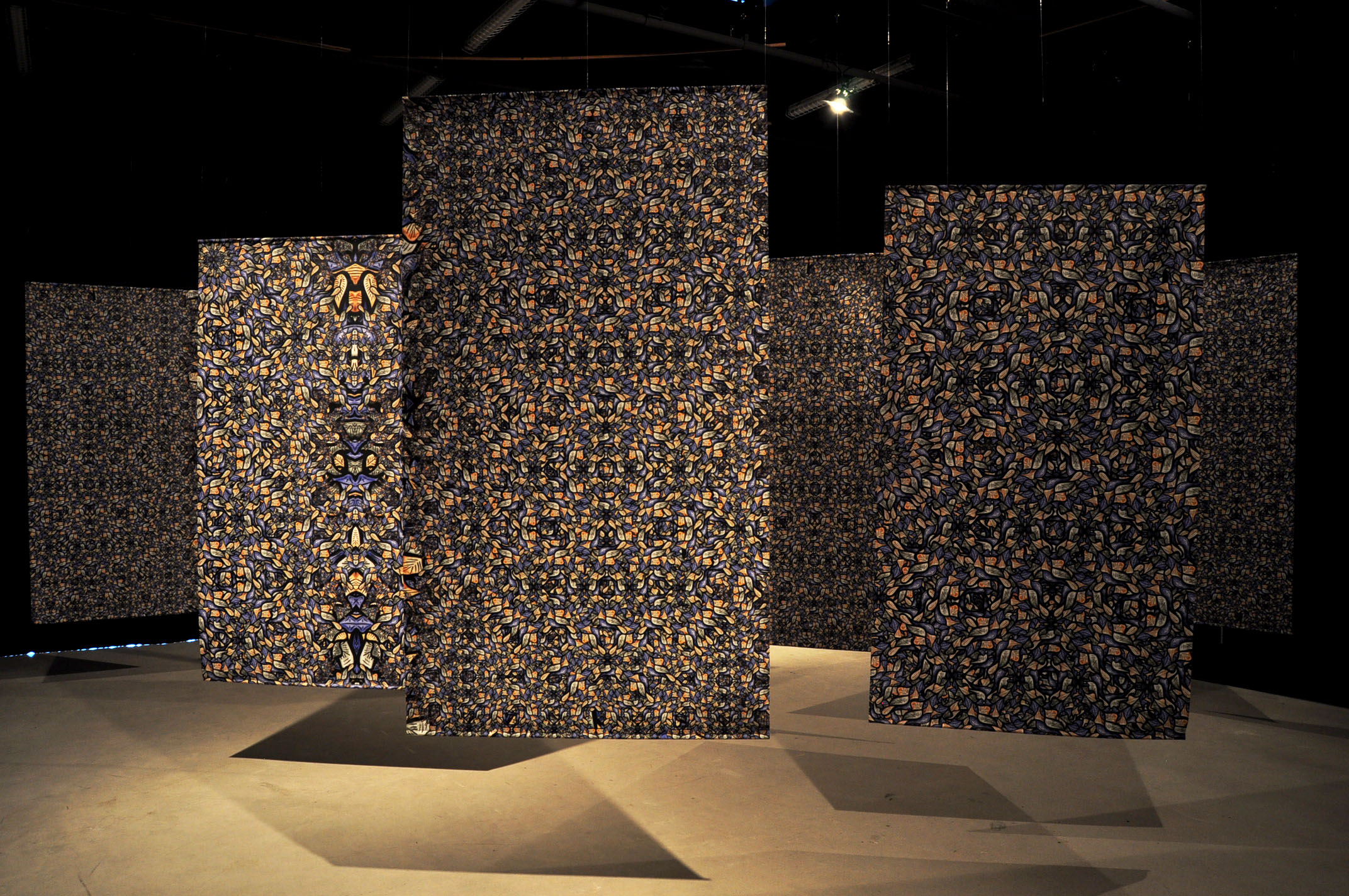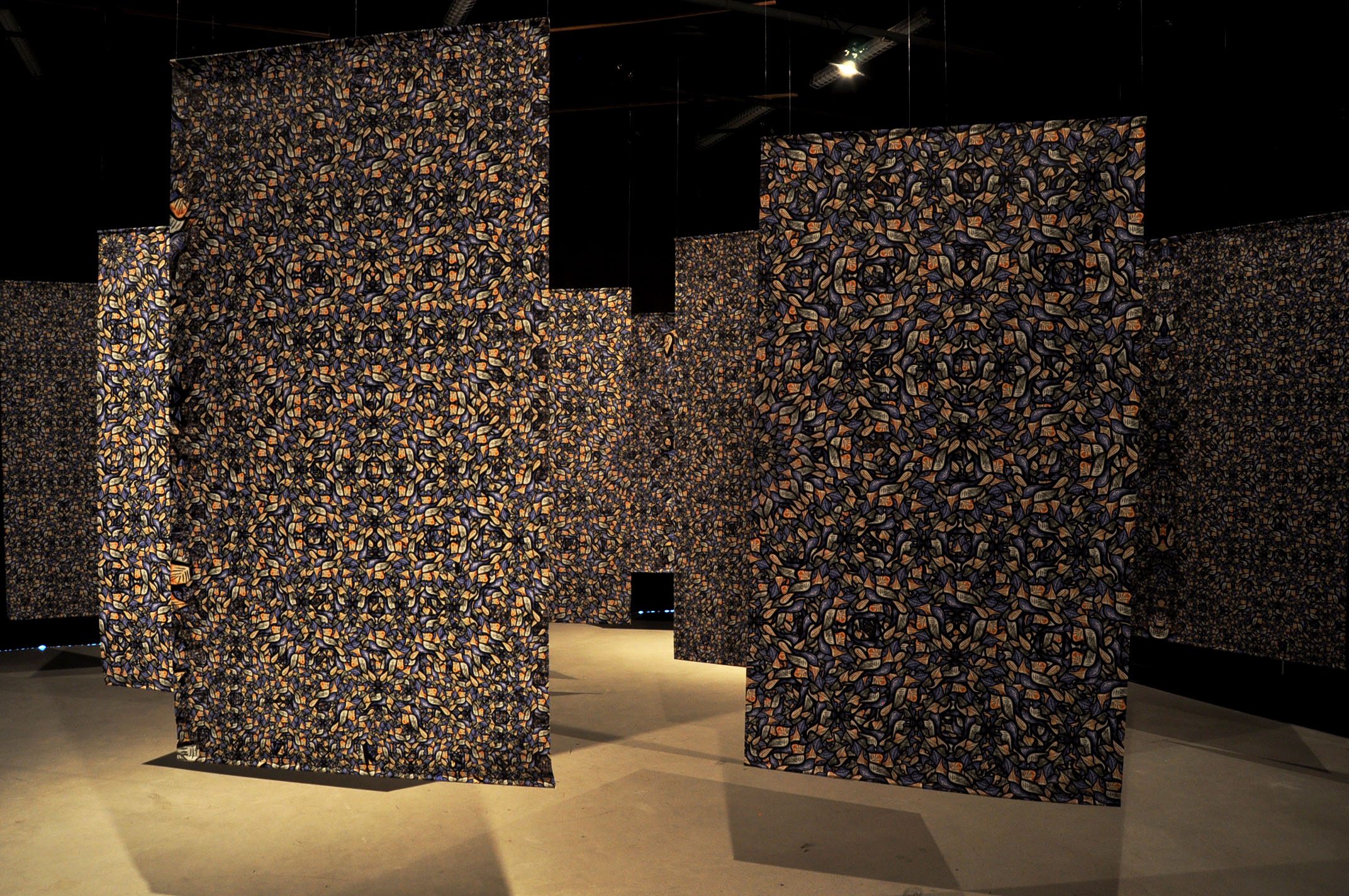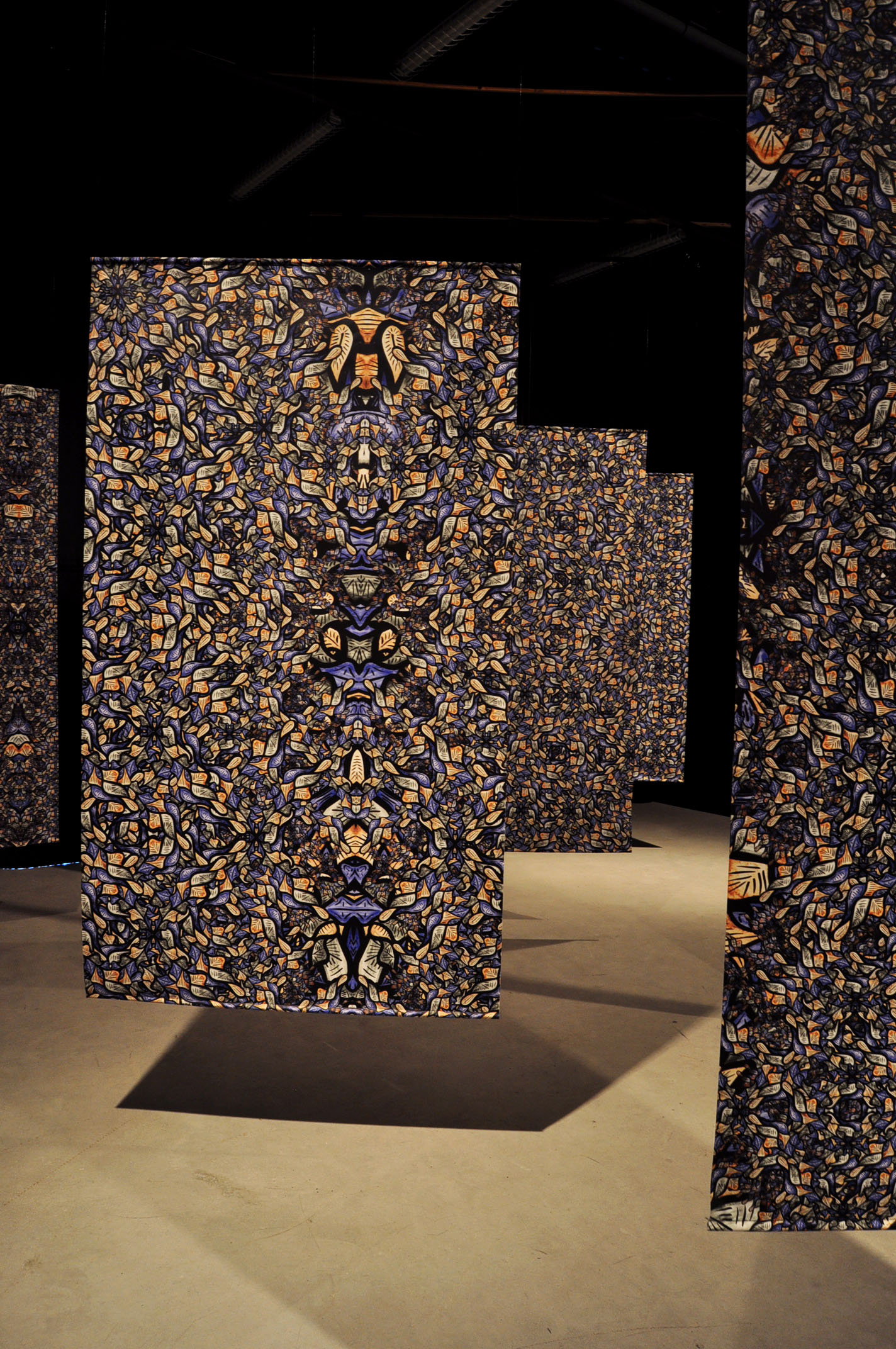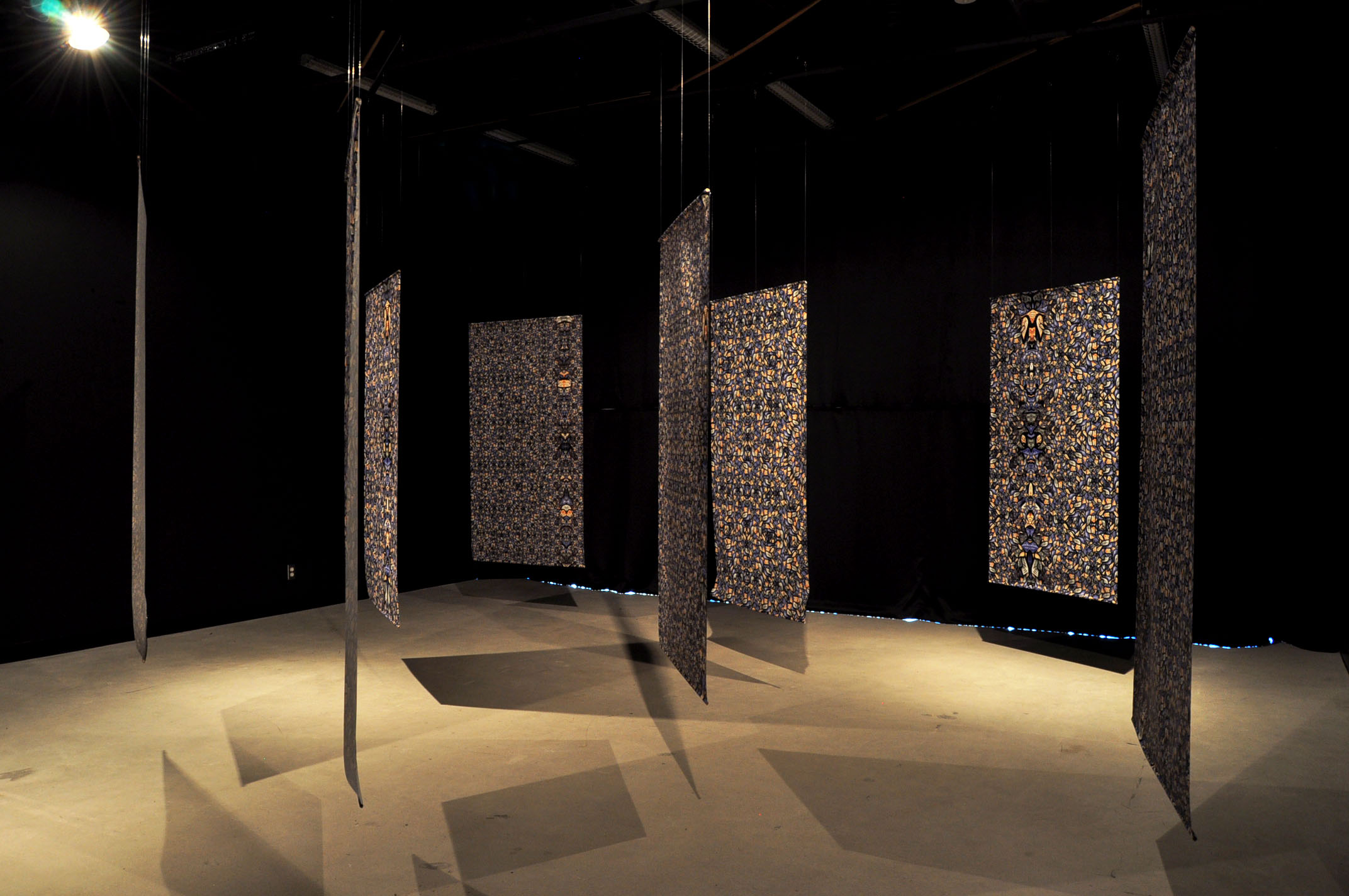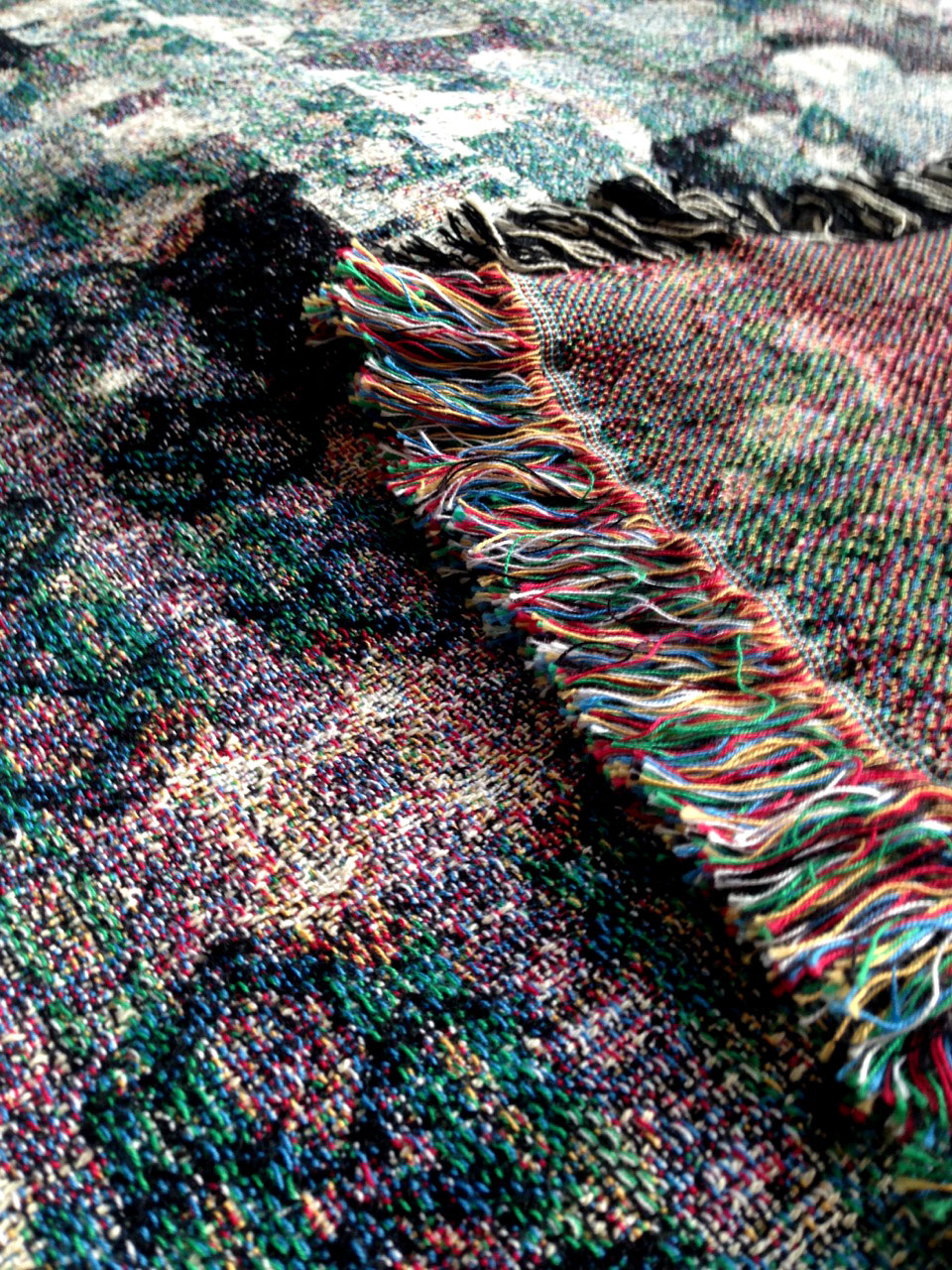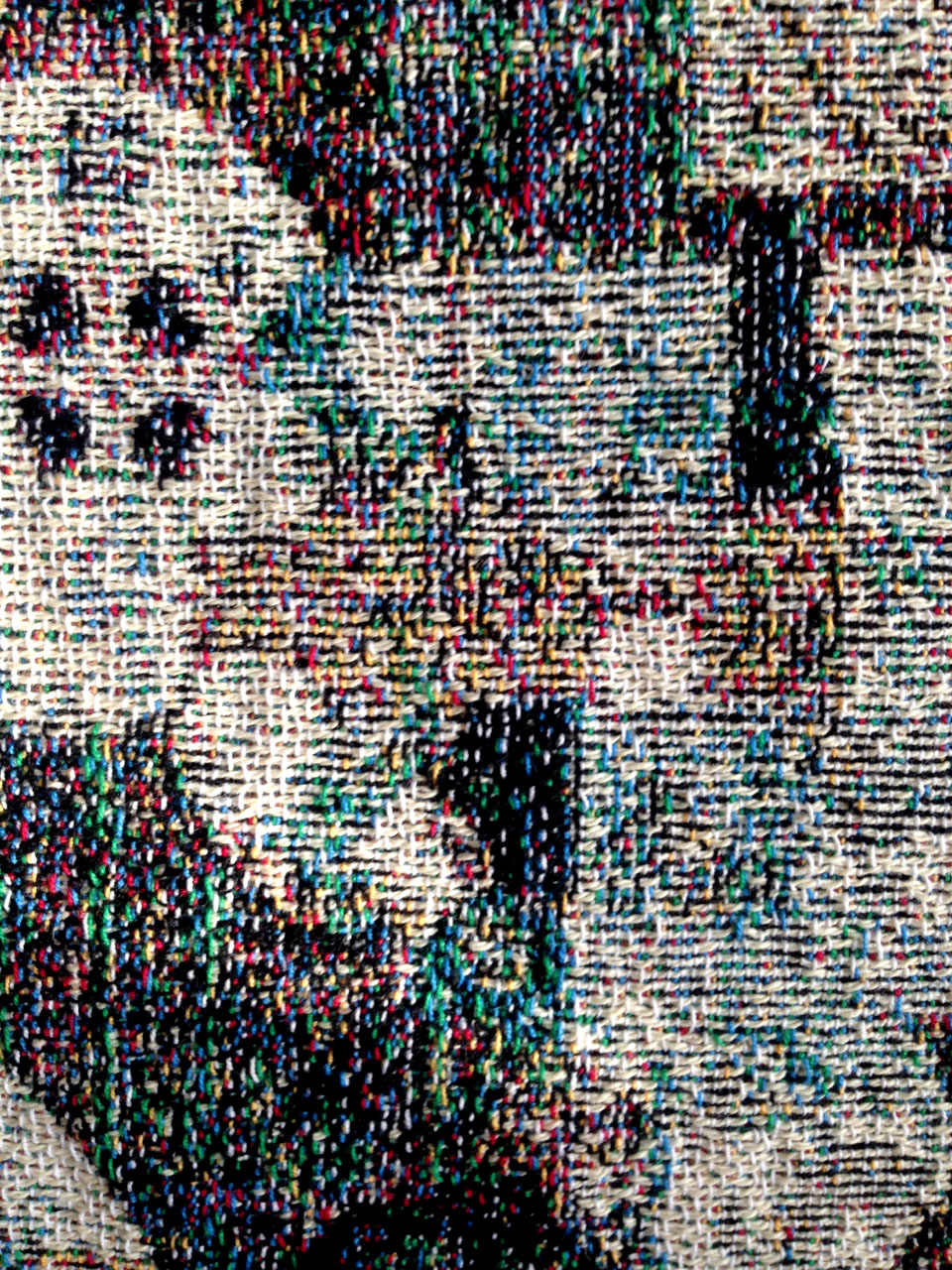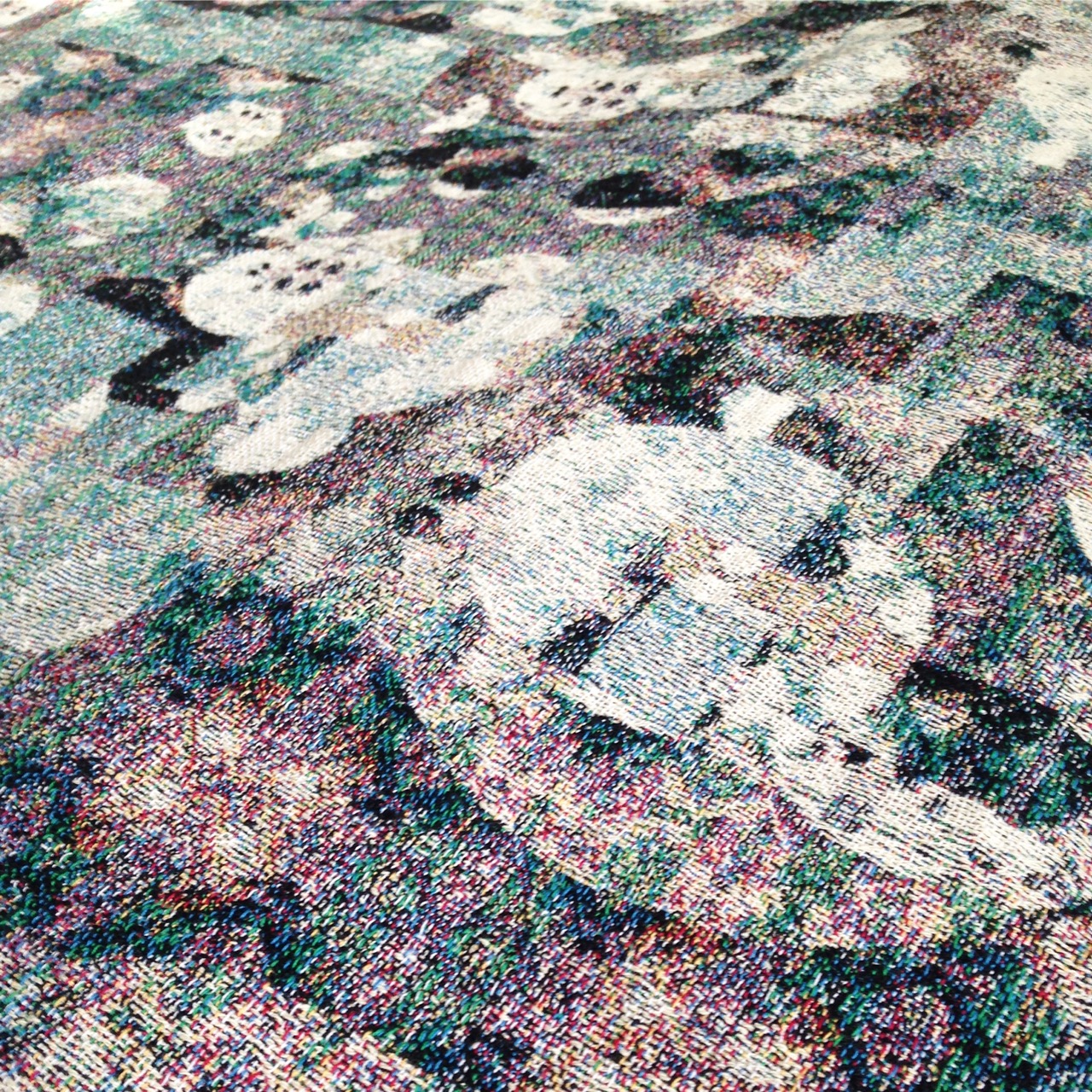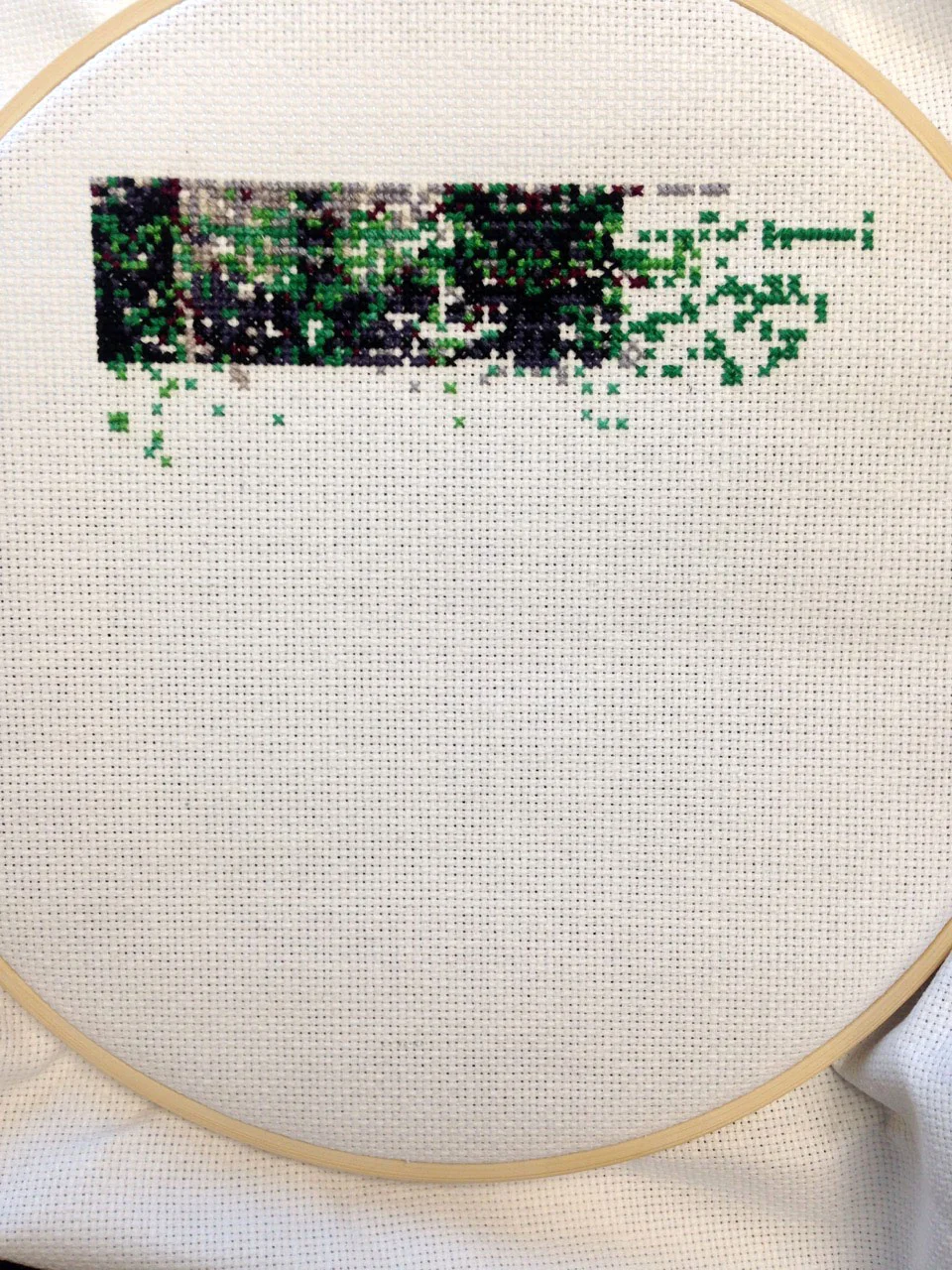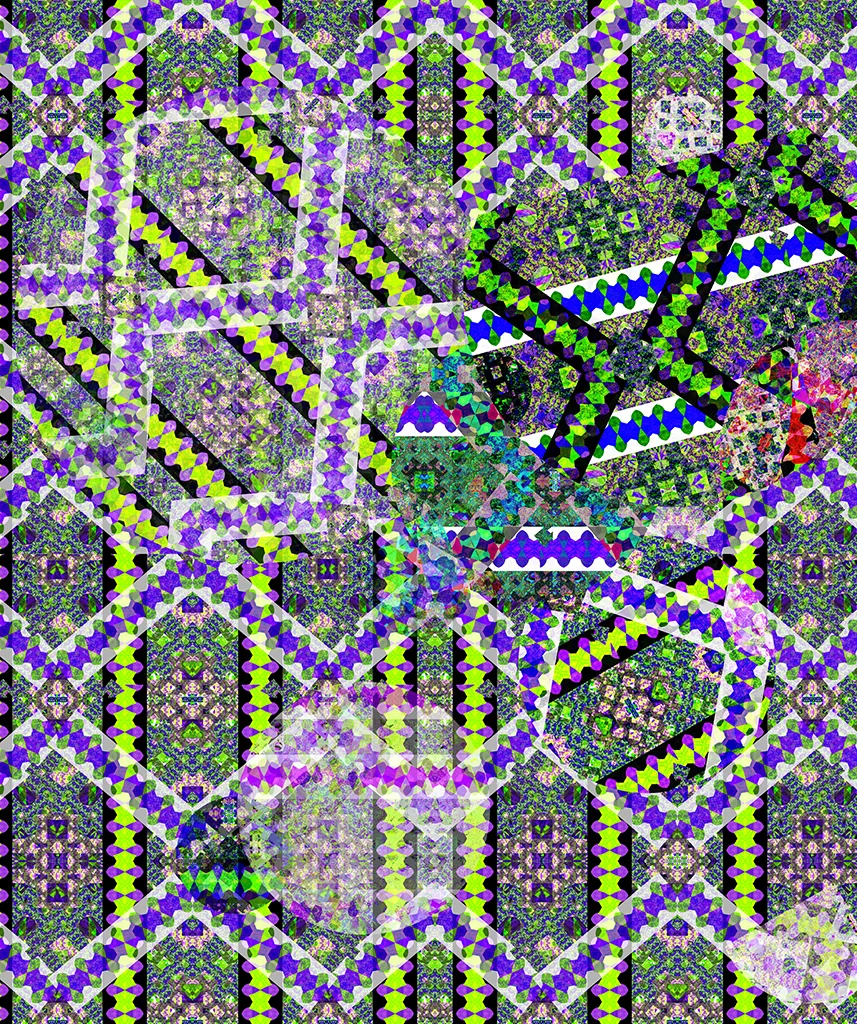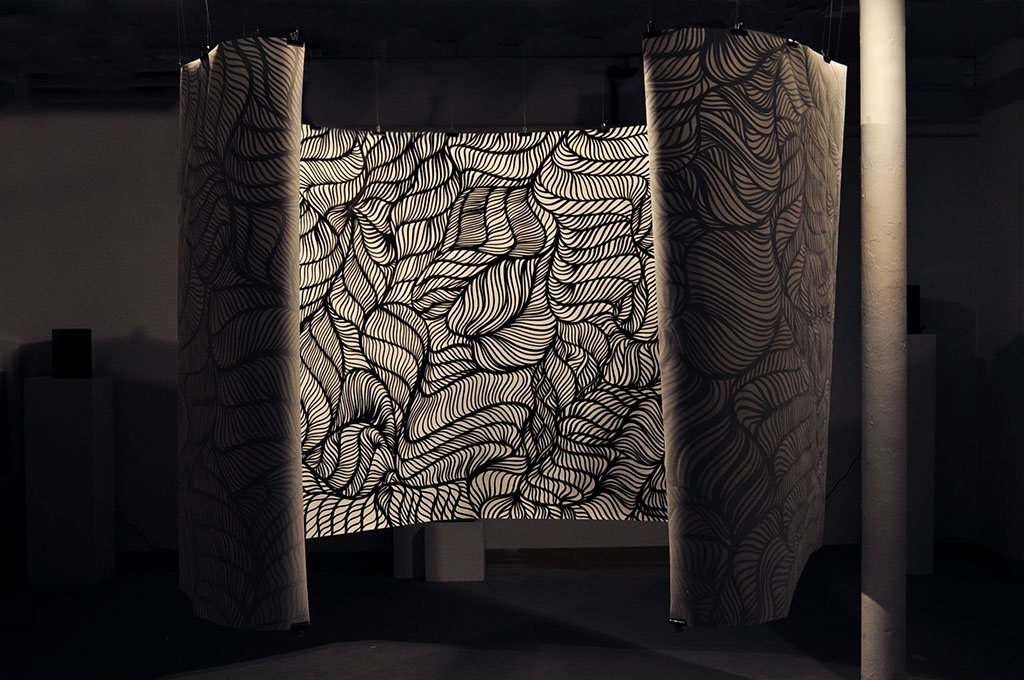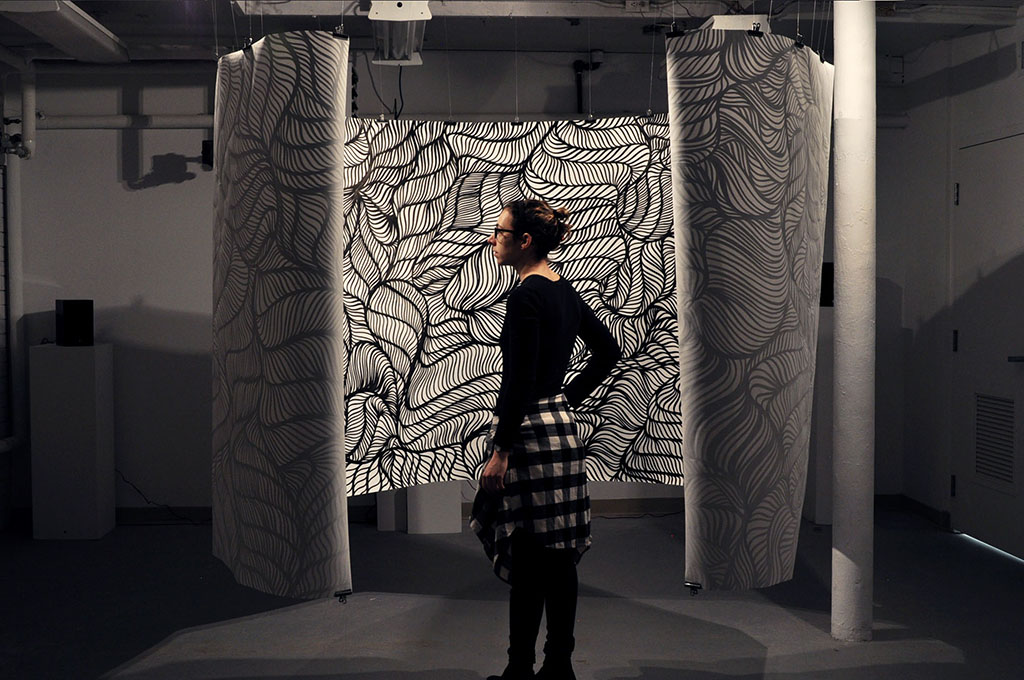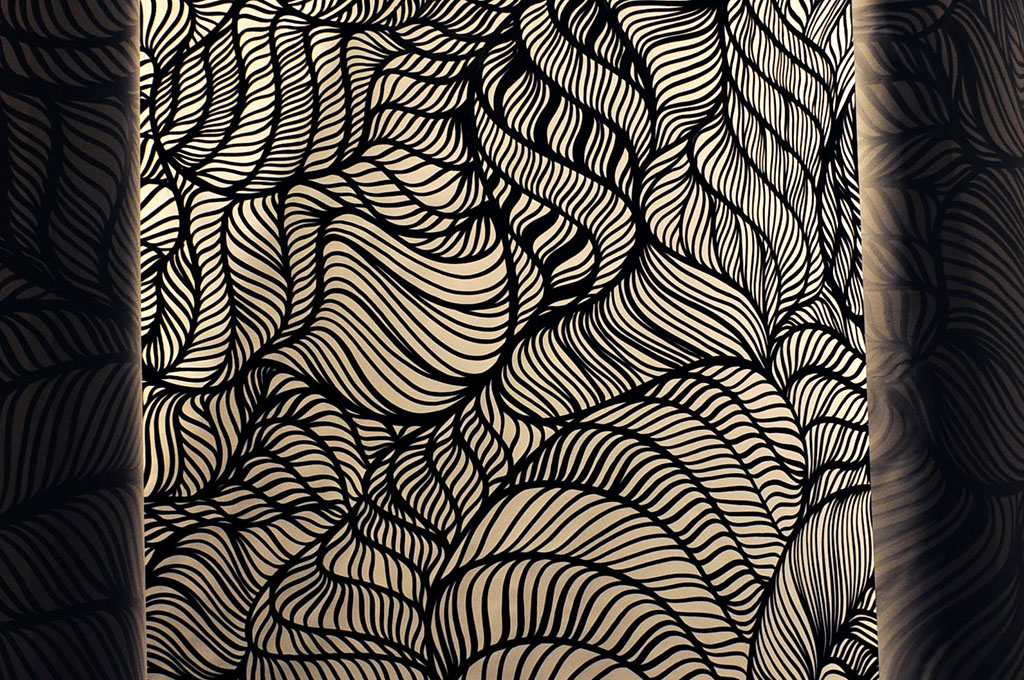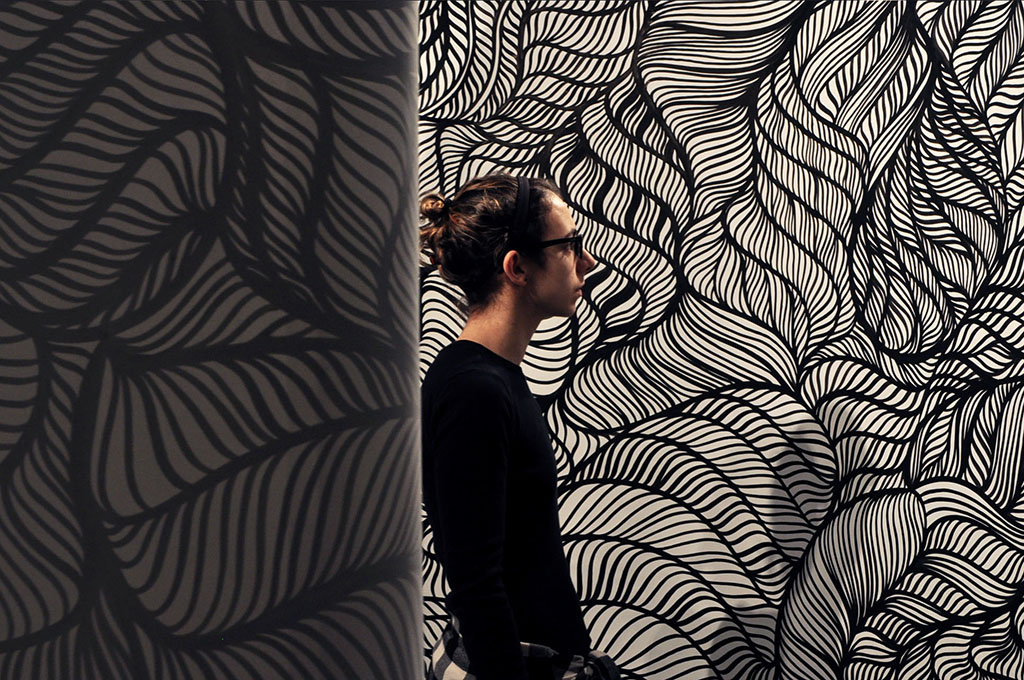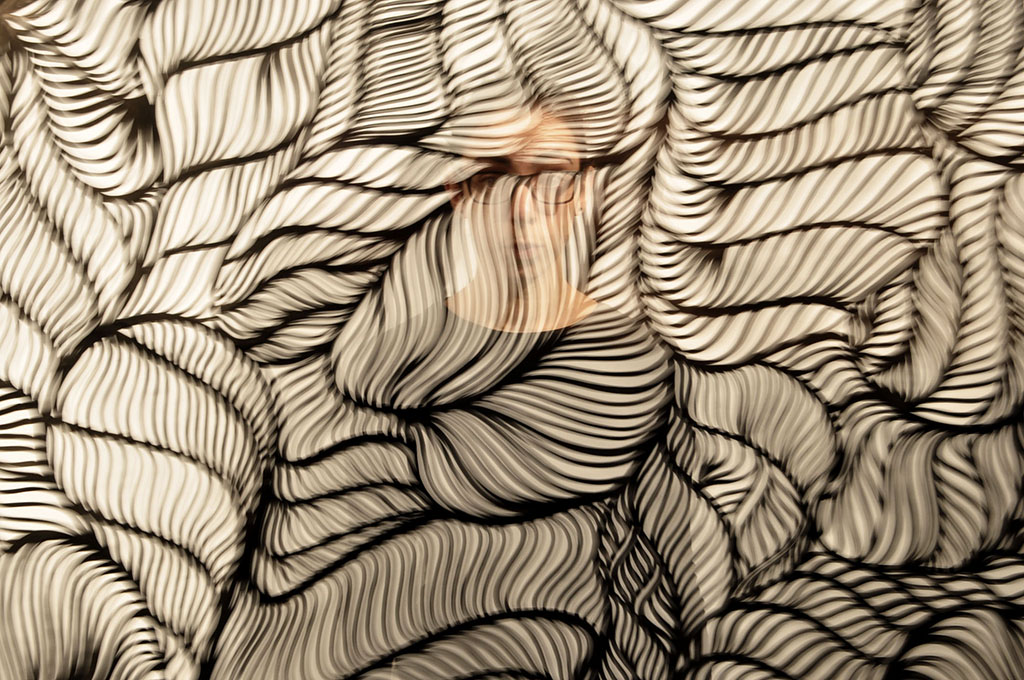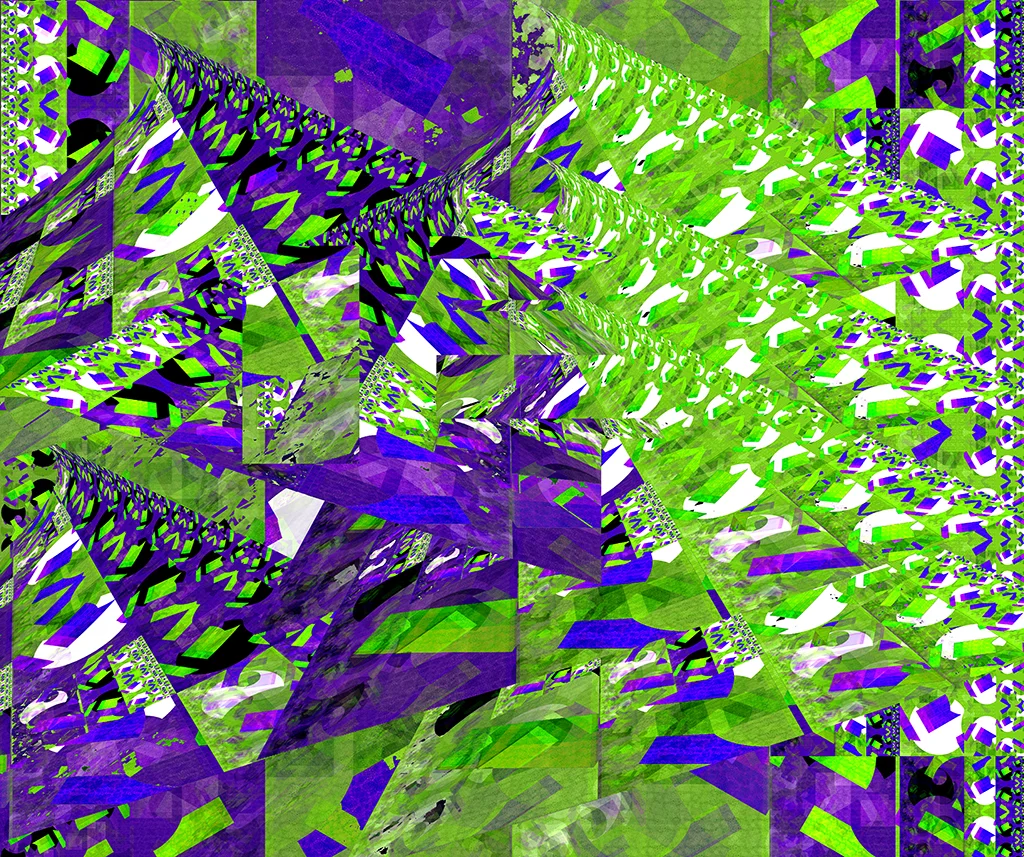Sorry for the delayed blog post, I know that I am behind by a couple of months. Life has been crazy lately and with the chaos of my school having a strike, it made for an interesting last semester. A couple of weeks ago I wrapped up my Fall semester with two critiques.
My first critique was for my final Installation project for my elective course. I printed a series of fabric banners, which I then spent two full days hanging/installing with the help of my friend Katherine. I wanted to create an interactive installation that would encourage the viewer to navigate the space, interact, and investigate the all encompassing patterns.
Next I had my main studio critique, which I forgot to document with my DSLR!!! However, I do still have some images I took with my phone of what I've been working on. I've been trying to create a range of works in which I use different types of machines and tools. I want to draw out the similarities between the ways that computers and artists make art.
The first project is a woven blanket. I created a complex multilayered pattern in Photoshop and then sent the Jpeg file to a company called PhotoWeavers in North Carolina. The blanket is a jacquard woven throw blanket 53"x70". I am interested in how the results of the final image was almost entirely out of my control. I provided the source information and then the computer/machine generated this magnificently woven image.
Next, I've been working on a cross-stitching project which I showed as a work in progress for the critique. I began by creating two small squares (19x19 squares), which were very precise, controlled, and spontaneously produced without following a pre-determined pattern. I scanned these two small squares and created digital images in Photoshop to help make a new pattern. I used a website called StitchFiddle to input these digital images, which generated them into cross-stitch patterns.
These new cross-stitch patterns are my guide for two new large squares (100x100 squares). I've been documenting the process by taking a photo after each day of work. I've also been timing each of my work sessions, I'm curious to see how long it will all take me. I've estimated that it will take approximately 125 hours and about 5 weeks. The images below show the development of the first large square over the span of about 2 weeks. If I'm lucky I think I might even finish it in a month!
As I work on these cross-stitch works I feel like a computer. However, I make mistakes, which I guess is what makes me human.
Lastly, are some more works in progress and some work I've already posted in a previous blog. These are my instructions works, in which I create a list of instructions before I begin creating a digital artwork in Photoshop. I must follow the instructions, however each instruction is often open to interpretation and can have a range of results. I've also been working on making a book that will demonstrate the range of imagery and possibilities that exist within these instruction works.
This month I am going to be writing and further developing my thesis paper. At the same time I have several projects on the go including cross-stitching, a book project, as well as a yarn project! Stay tuned for more updates next month :).
